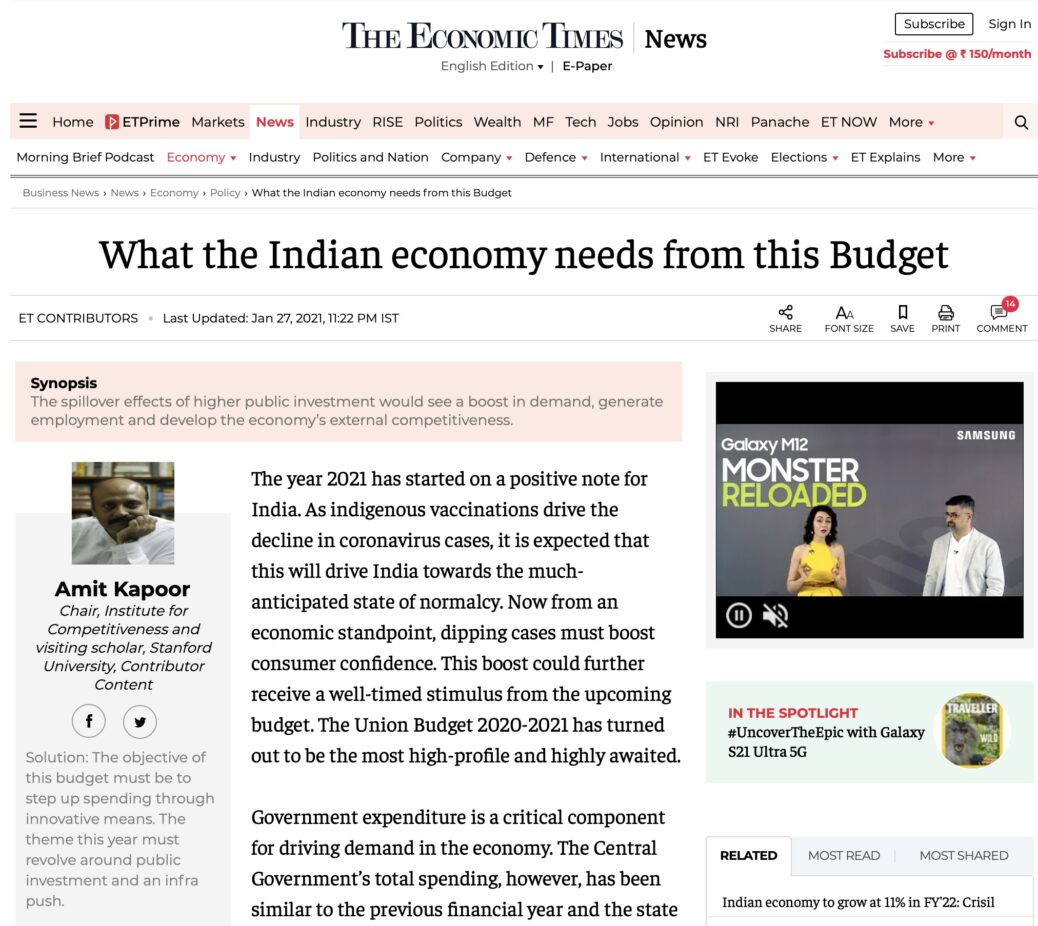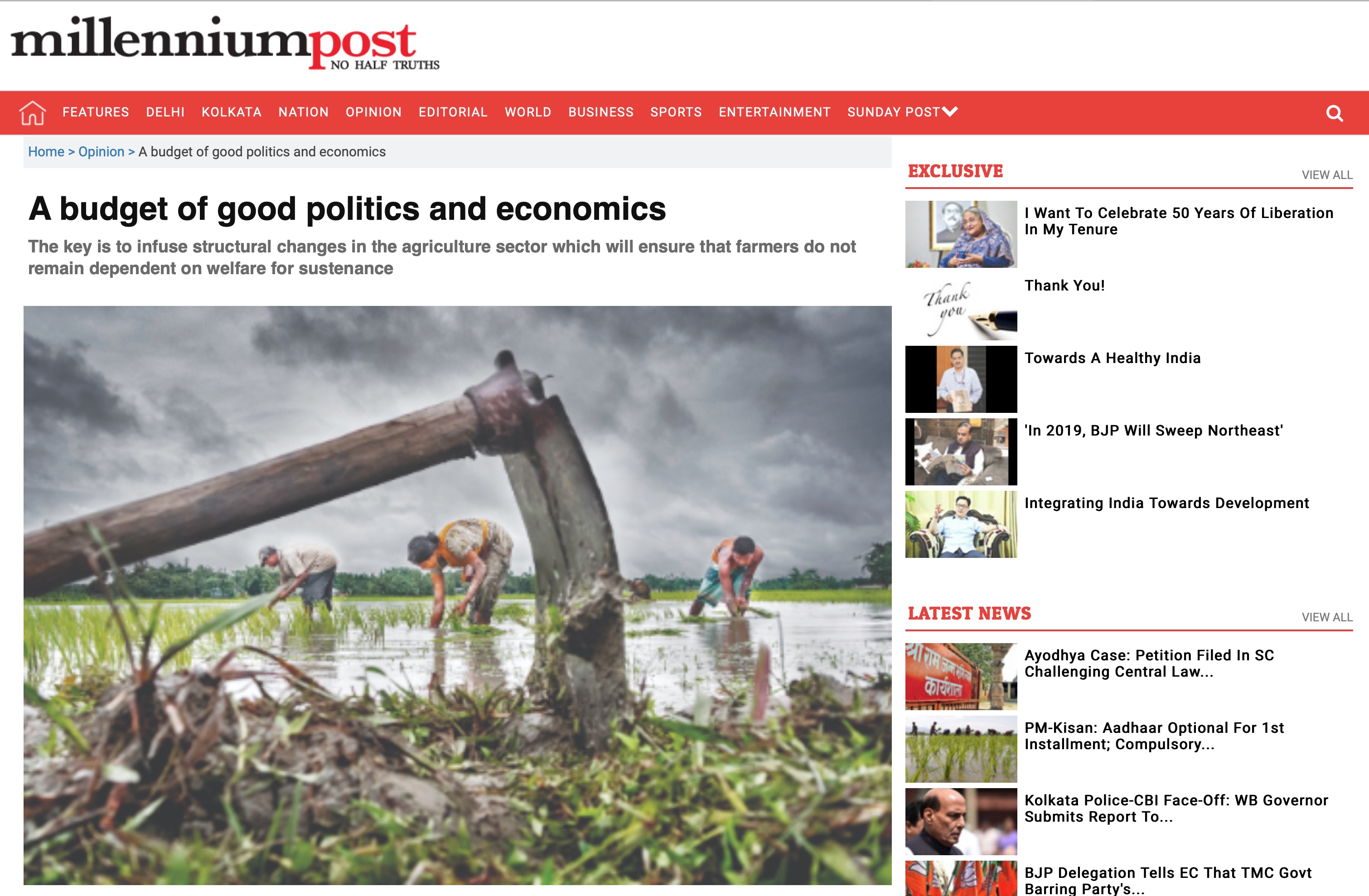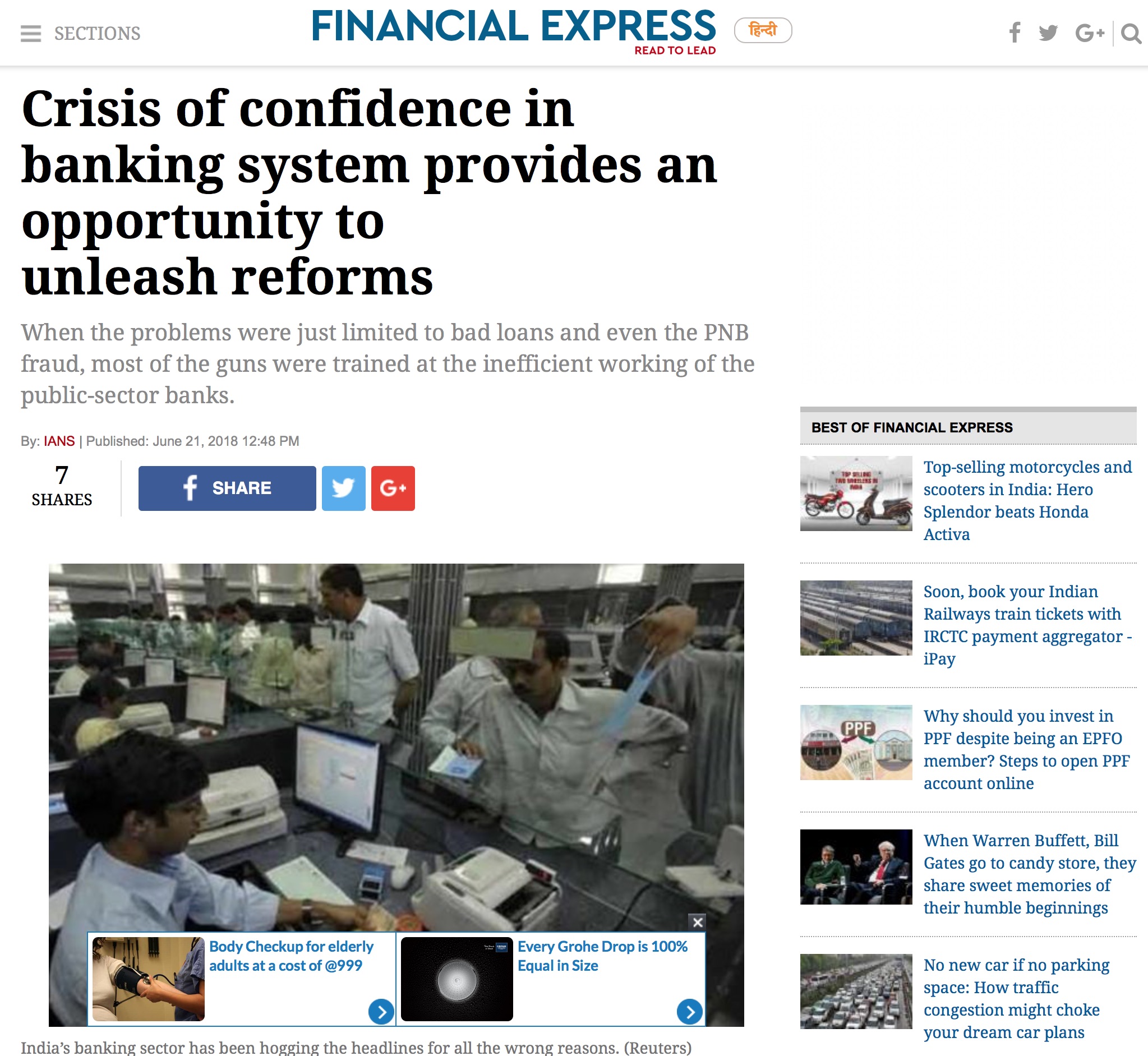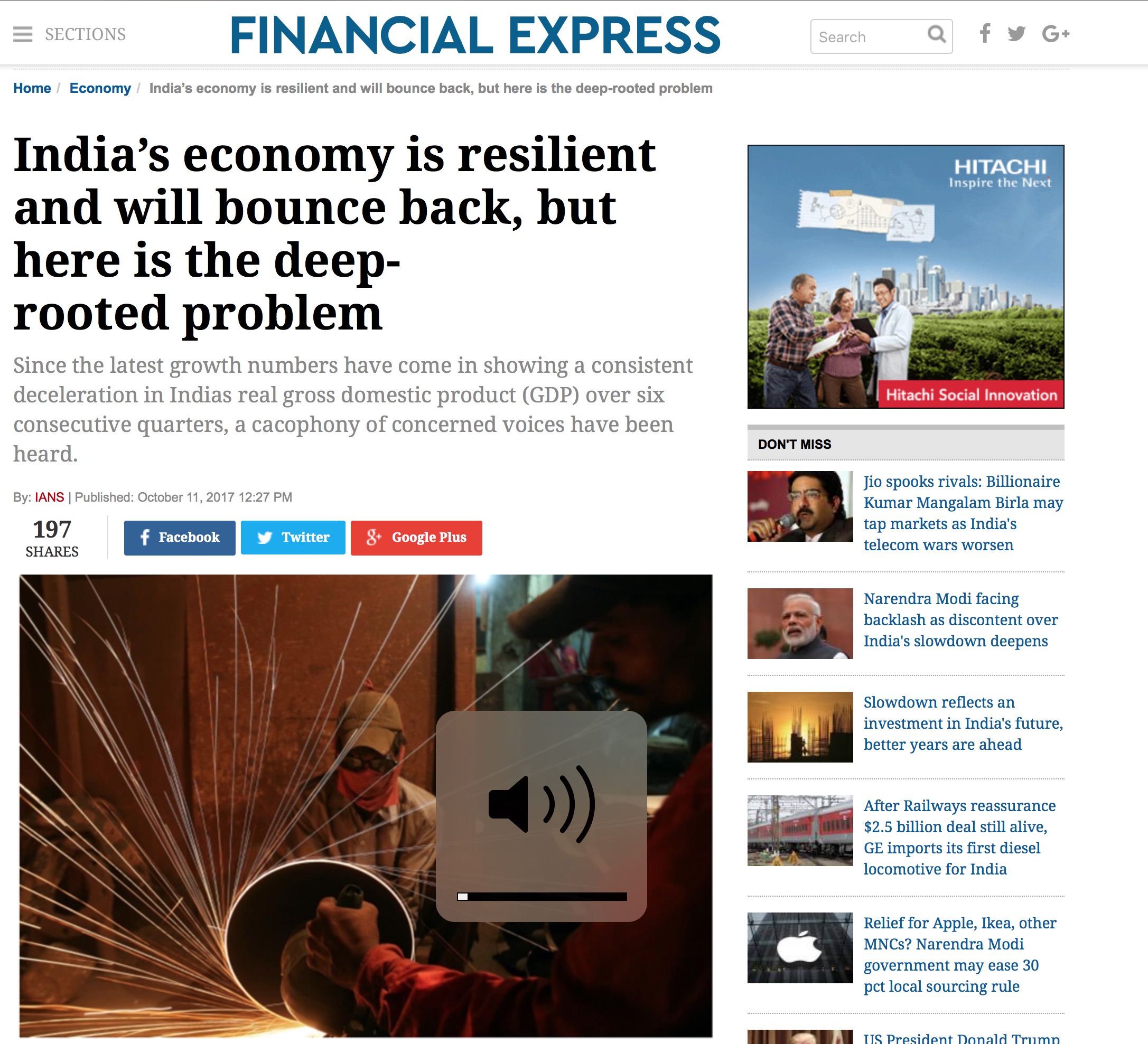The spillover effects of higher public investment would see a boost in demand, generate employment and develop the economy’s external competitiveness.
The year 2021 has started on a positive note for India. As indigenous vaccinations drive the decline in coronavirus cases, it is expected that this will drive India towards the much-anticipated state of normalcy. Now from an economic standpoint, dipping cases must boost consumer confidence. This boost could further receive a well-timed stimulus from the upcoming budget. The Union Budget 2020-2021 has turned out to be the most high-profile and highly awaited.
Government expenditure is a critical component for driving demand in the economy. The Central Government’s total spending, however, has been similar to the previous financial year and the state government finances are already overleveraged. Thus, the objective of the upcoming budget must be to step up spending through innovative means. Essentially, the theme of the next budget must revolve around public investment and massive infrastructure push. This will usher in the demand-driven recovery of the economy and help overcome the challenges in a post-Covid economy. The spillover effects would see a boost in demand, generate employment and develop the economy’s external competitiveness. Without a push to drive demand, supply-side measures and strong reforms under the ambit of Atmanirbhar Bharat will fail to create avenues of growth and prosperity.
The following are some of the suggestions from a recent study conducted by Institute for Competitiveness for the upcoming Budget.
Empowering the Manufacturing Sector
Manufacturing sector, especially low-skilled manufacturing, must be one of the focal points for dedicated investment. The sector was one of positives amidst a poor economic performance in the latter half of 2020 and has the potential to employ millions of unskilled and semi-skilled workers. As companies, being sceptical of global economic fragility, seek to move their value chains away from China to other manufacturing nations, India must step up as a prospective destination to promote low-skill manufacturing.
Indian also has a strong pool of low-skilled labour. This could play into India’s competitive advantage, and therefore, boost the productivity of industries that rely on low-skilled production such as shoes and apparel factories. The upcoming Budget must focus on transforming Indian manufacturing into a competitive exporting sector that relies on the mass production of products at economical rates. By identifying potential industries such as textiles, apparel, leather, food processing, construction, retail, etc. to achieve global competitiveness and by incentivizing them through schemes such as Production-Linked Incentive (PLI), India could attract investment in the sector and raise its overall productivity.
Boosting the domestic consumption of durables
Apart from mass employment generation, another means of ensuring demand-driven growth is to boost the purchasing power of the people. Through this Union Budget, the Central Government needs a way to spur domestic demand. After economic disasters such as the bursting of the dot com bubble and the 2008 recession, the role of the government has been to incentivize consumers to step into the market.
In the ongoing economic crisis, one such way could be to distribute vouchers that could stimulate consumption of durables such as clothing, food, etc. Under the Budget, such a scheme must target ration shops as it would cater to the demands of the most vulnerable sections and will also curb any potential leakages by linking the vouchers with the Aadhar card and the Point of Sale (PoS) devices at the stores. This would ensure that the entitled beneficiaries receive their dues. Furthermore, the vouchers can be the better alternative than cash transfers because they would not cause inflation as real demand is generated.
Refinancing via Covid Bonds
The above two measures are attributed to relief and recovery measures to create demand-driven economic growth. However, given the tight financial situation of the governing entities, it is crucial that there have to be new means to mobilize funds.
Introducing Covid Bonds is one of the innovative financing mechanisms for the governing entities without generating any excess impact of the crowding-out of private investment. These bonds could be provisioned in higher denominations.
These Covid Bonds could be launched tax-free with the option of providing a one-year moratorium on payment of interest, given how stretched the government finances. Such Bonds could be subscribed by any Indian taxpayers, corporates and NRIs. This would allow diversification in the subscription base. Furthermore, it could offset the potential damage of comparatively high corporate defaults that were recorded in 2019. Another appeal of such Covid Bonds is that government-backed securities are giltedged and any concern attached with repayment would not bother the subscribers. Covid Bonds, therefore, could give the Indian economy the hope to restructure its development plans via a much-needed injection of valuable funds, which the government can successfully utilize to support infrastructure investments and stimulate productive sectors.
General Remedy: Strengthening Public Investment
Besides targeting specific sectors and using innovative means to mobilize funds, a dedicated focus on strengthening public investment in healthcare would be the most effective long-term stimulating factor. Apart from filling in shortfalls of health care providers and developing healthcare infrastructure, it would ensure availability of sufficient healthcare professionals to take care of the increasing inflow of patients. It would also help the country fill in the huge gap in human resources required for the proper functioning of healthcare services.
In order to reach the target of allocating public health expenditure to 2.5 per cent of the GDP by 2025, state budgetary allocation on health care needs to increase from the current 4.7 per cent of total budget to 8 per cent. This could be done with an earmarked amount (approximately 10 per cent of total union funds allocated to the states) to be solely used for developing healthcare infrastructure, especially primary healthcare. Apart from developing infrastructure, a certain amount of state budget should also be allocated to health/biomedical research in alliance with private hospitals and industries. This could not only improve the regional health sector but also the biotechnology industry, leading to better premiums in the future gained from high-end value products.
The article was published with Economic Times on January 27, 2021.
























